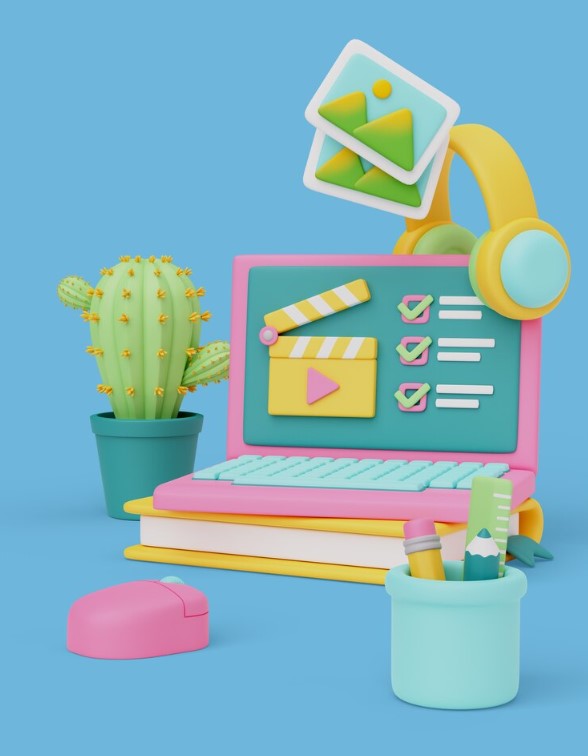In this digital age, where information is readily available at your fingertips, the credibility of online content has become questionable. The increasing prevalence of dubious articles, websites, and social media posts has raised concerns about the reliability of digital resources.
With the rise of fake news and misinformation, it has become essential to evaluate the credibility of the content you consume. This can be a daunting task, especially when navigating contentious topics or sensitive issues.
However, with the right tools and strategies, you can effectively discern trustworthy information and make informed decisions. In this article, we will explore ways to identify and evaluate questionable content, providing you with practical tips and resources to enhance your digital literacy skills.
Join us as we dive into the art of content credibility and discover how to navigate the complex world of digital resources in the age of questionable content.
Table of Contents
Understanding Questionable Content

Questionable content refers to any online material that is unreliable, exaggerated, or possibly untrue. In today’s digital age, such content can be found on various digital resources, including social media platforms, news websites, and blogs. The impact of questionable content on digital resources is significant, as it can cause misinformation, confusion, and harm to individuals, organizations, and society as a whole. Therefore, it is essential to be able to identify and navigate such content effectively.
Understanding questionable content starts with being able to recognize the signs of unreliable information. These signs may include exaggerated or sensational headlines, exaggerated statistics, and anonymous sources. In addition, pay attention to the language and tone used, as well as the overall quality of the website or platform.
To navigate questionable content effectively, it is crucial to use your critical thinking skills and verify all information before accepting it as fact. Always consider the source of the information, evaluate its credibility, cross-check it with other reliable sources, and look for any potential biases or agendas. By doing so, you can protect yourself and others from the negative impact of questionable content on digital resources.
Identifying Controversial Articles

Controversial articles are prevalent in digital media, and recognizing them is crucial to making informed decisions about their credibility. Keep an eye out for certain indicators that suggest that an article is controversial. Common contentious topics include politics, religion, and social issues, such as race and gender.
You may notice that these articles often use sensationalized language or hyperbole to garner attention. Additionally, they may feature extreme viewpoints or cherry-picked facts that support their argument.
To assess the credibility of a controversial article, start by verifying the source’s reputation. Reputable sources often have an established track record of providing accurate and unbiased information.
Another helpful tip is to cross-check the information with multiple sources. This cross-checking will ensure that the content is accurate and validate any claims made in the article.
Remember, being able to identify and assess controversial articles accurately is a critical aspect of digital literacy. It equips you with the necessary tools to make informed decisions on contentious issues and become an active participant in the online community.
Addressing Inappropriate Material

Encountering inappropriate material and offensive content online can be distressing and triggering. It is crucial to have strategies in place for handling such situations effectively.
Reporting Inappropriate Content
If you encounter inappropriate content and feel comfortable doing so, reporting it to the website or platform is a critical step towards removing it from view. Look for a ‘report’ button or other ways to flag inappropriate material and follow the reporting process.
Blocking and Muting
If the material is coming from an individual or account, blocking them on social media and muting their content can be an effective way to avoid being exposed to their posts. It is also important to know how to report potentially dangerous or threatening behavior to the website or platform.
Protecting and Caring for Yourself
It is natural to feel overwhelmed and distressed after encountering inappropriate material or offensive content online. It is essential to prioritize your well-being and reach out for support when necessary. Consider speaking with a trusted friend or seeking professional counseling.
Remember that reporting and addressing inappropriate material is essential for maintaining a safe and respectful online community. By taking action and implementing these strategies, you are contributing to a safer digital environment free of inappropriate material and offensive content.
Evaluating Controversial Websites
With the abundance of information available online, it’s becoming increasingly important to evaluate the credibility of sources. This is especially true when it comes to controversial websites that may present disputed information. Here are some red flags to watch out for when evaluating such websites:
- Lack of author credentials or contact information
- Sensationalized headlines and content
- Promoting biased viewpoints or ideologies
- Using anecdotal evidence or personal opinions as facts
- Unverified statistics or claims
To effectively fact-check disputed information, there are various tools available online. One such tool is FactCheck.org, which is a nonpartisan organization that conducts independent research to identify and clarify misleading claims. Another tool is Snopes.com, a website that focuses on debunking urban legends, folklore, and misinformation.
By utilizing these tools and being vigilant in evaluating the credibility of controversial websites, you can effectively navigate the digital landscape and make informed decisions about the reliability of information presented online.
Navigating Debatable Subject Matter
Discussing debatable subject matter and sensitive issues can often be a challenge, especially in the age of social media and online browsing. The internet has made it easier than ever to access information, but it has also made it more challenging to determine the reliability and credibility of sources. When dealing with sensitive topics, it is crucial to approach them with an open mind and a critical eye.
One of the first steps when dealing with debatable subject matter is to look for reliable sources of information. When researching a particular topic, it is essential to seek out a variety of sources, including both mainstream news outlets and lesser-known publications. By gathering information from multiple sources and perspectives, you can gain a well-rounded understanding of the topic at hand and form a more informed opinion.
It is also important to evaluate the credentials of the authors and the publications putting forth the information. Look for authors who have expertise in the subject matter or are otherwise qualified to speak on the topic. Consider the reputation of the publication or website in question and look for any red flags that may call its credibility into question.
When reading through the information presented on a sensitive topic, pay attention to the language used and the tone of the piece. Are there any loaded words or emotive language? Does the author seem to be presenting a balanced perspective or pushing a particular agenda? By asking yourself these questions, you can better evaluate the information presented and determine whether it is credible and trustworthy.
Finally, it is important to approach debatable subject matter with an open mind and a willingness to engage in civil discourse. Sensitive issues often involve strongly held beliefs and emotions, but that does not mean that conversations cannot be productive and respectful. By listening to the perspectives of others and approaching the conversation with empathy, you can gain a deeper understanding of the issue and work towards finding common ground.
Assessing Content Credibility
Content credibility is crucial in today’s digital age, where questionable content is prevalent. When evaluating the credibility of content, there are several factors to consider:
Author Credentials
Before relying on information, it’s important to evaluate the author’s credentials. Are they an expert in the field they’re writing about? Do they have relevant education or experience?
Source Reliability
The source of the information is just as important as the author’s credentials. Is the website or publication reputable? Do they have a history of accurate reporting and factual information?
Information Accuracy
It’s essential to fact-check the information presented in the content. Are there sources cited to support claims? Are there any obvious biases present?
| Tip | Description |
|---|---|
| Use fact-checking tools | Several online fact-checking tools can help assess the accuracy of information, including FactCheck.org and Snopes. |
| Check sources | Investigate the credibility of sources cited in the content, including publications, experts, and organizations. |
| Look for multiple perspectives | Consider different viewpoints presented on the topic to gain a comprehensive understanding of the information. |
By evaluating content credibility, you can make informed decisions about the reliability of information presented online. Utilize these tips and tools to assess the credibility of questionable content and navigate the digital age with confidence.
Reliable Fact-Checking Resources
With so much questionable content available online, it’s crucial to have access to reliable fact-checking resources. Below are some trusted platforms that can assist you in evaluating information:
| Platform | Description | Website |
|---|---|---|
| FactCheck.org | A nonpartisan website that monitors the accuracy of political statements. | https://www.factcheck.org/ |
| Snopes | A popular fact-checking website that verifies and debunks urban legends and rumors. | https://www.snopes.com/ |
| PolitiFact | A fact-checking website that rates the accuracy of claims made by politicians and public figures. | https://www.politifact.com/ |
| Media Bias/Fact Check | An independent fact-checking website that rates the bias and reliability of news sources. | https://mediabiasfactcheck.com/ |
| Fact-Checking Toolkit | An online resource created by the International Journalists’ Network that provides tools and tips for verifying information. | https://ijnet.org/fact-checking-toolkit |
By using these fact-checking resources, you can verify the accuracy of information and ensure that you’re only sharing trustworthy content with your network.
Practicing Digital Literacy
In today’s age of digital information, it has become increasingly important to develop digital literacy skills to navigate questionable content. Here are some practical tips to help you evaluate sources and conduct thorough research:
- Check the author’s credentials: Before you start reading an article or watching a video, take a moment to research the author’s credentials. Do they have relevant expertise or experience in the topic they are discussing?
- Examine the source: Consider the reliability of the source sharing the information. Is it a reputable news organization or a personal blog? Is the content biased in any way?
- Recognize bias: Be aware of your own biases and evaluate content objectively. Look for evidence that supports both sides of the argument.
- Verify information: Fact-check all information before sharing it with others. Use trusted fact-checking websites or consult multiple sources to cross-reference information.
- Be cautious with clickbait: Don’t trust sensational headlines or clickbait content. Often, the content is misleading or outright false.
By practicing digital literacy, you can be a responsible and informed consumer of online information. Remember to approach questionable content with a critical eye and apply the above tips to evaluate content credibility.
Promoting Media Literacy Education
Media literacy education is essential in today’s digital age. With the prevalence of questionable content online, it is critical to teach critical thinking skills to empower individuals to evaluate information effectively. By promoting media literacy education in schools and communities, individuals can learn to identify red flags and navigate potentially dangerous or misleading content.
Media literacy education goes beyond simply teaching individuals how to use digital resources or social media platforms. It emphasizes the importance of analyzing and evaluating content sources, recognizing bias, and conducting thorough research. By doing so, individuals can separate fact from opinion and make informed decisions.
Integrating media literacy education into school curriculums can equip young people with the skills they need to navigate the digital landscape effectively. It can also help combat the spread of misinformation and promote digital citizenship.
Community-based programs and initiatives can also help promote media literacy education. By providing access to resources and support, individuals can learn to be critical consumers of information and play an active role in combating questionable content.
Overall, promoting media literacy education is a crucial step in the fight against questionable content. By equipping individuals with the skills they need to navigate the digital landscape effectively, we can create a safer and more informed online community.
Conclusion
As you navigate the digital landscape, it is essential to remain vigilant and critical of the content you consume. Questionable content is prevalent, and it can be challenging to discern trustworthy information. However, by following the tips and strategies outlined in this article, you can develop the skills needed to evaluate content credibility effectively.
To identify and avoid questionable content, be sure to understand what it is and how it impacts digital resources. Recognizing controversial articles and identifying inappropriate material is also crucial. When evaluating content credibility, consider the author of the content, the reliability of the source, and the accuracy of the information presented.
Online fact-checking resources can be incredibly valuable in assessing the validity of the information presented. Additionally, it is essential to practice digital literacy and continually improve your critical thinking skills. By incorporating media literacy education in schools and communities, we can empower individuals to navigate questionable content effectively.
Remember that evaluating content credibility is an ongoing process, and it requires your attention and effort. Stay informed, stay curious, and keep questioning. By doing so, you can contribute to a more informed and trustworthy digital world.
Thank you for reading, and we hope this article has provided you with valuable insights on evaluating questionable content.




